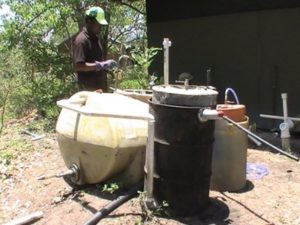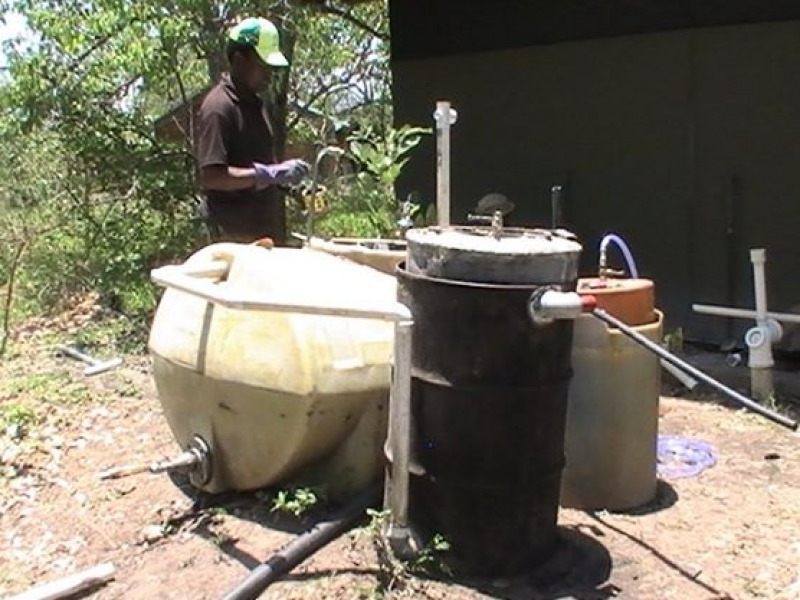
Playground for biogas experiments at base camp.
August 14, 2010
Yube Boitumelo Siyangaphi, Joseph Kabimba and Kebonyemang Mashabe and I have built a three-stage biodigestor at the worker’s camp at CSU base camp at Selinda Wildlife Reserve in Botswana. It consists of a fiberglass-sealed 1,000-liter horizontal digester tank, which serves as the primary digester. There is also a 200-liter used steel oil drum with a telescoping gas collector made from a second oil drum cut in two (with 5 cm cut out all around) and then brazed (torch welded) back together so it fits inside the first drum. We made the third collector out of two plastic drums (110 and 100 liter). Then we filled all of the tanks with a mixture of sewage sludge pumped from the bottom of the septic tank and elephant dung collected from the herds that walked through camp the other night.
The CSU base camp biodigestor shows that we can get flammable gas within two days using septic tank sludge and hippo-dung saturated Okavango delta lake mud. It takes three weeks to create flammable gas with animal dung, like the elephant dung we were trying.
In the CSU system ,we also pioneered the idea of connecting an Insinkerator Evolution 200 to an Admiral Macerating Toilet. Emerson Electronics donated the Insinkerator, which now grinds the staff kitchen waste. I bought the macerating toilet using the Blackstone Ranch/Nat Geo Innovation Challenge Grant in Germany. It is connected to the staff toilets. The kitchen scraps provide the primary energy while the macerating toilet provides a continuous supply of bacteria and some residual energy. It also provides pumping energy to get the slurry into the distant biodigester.

